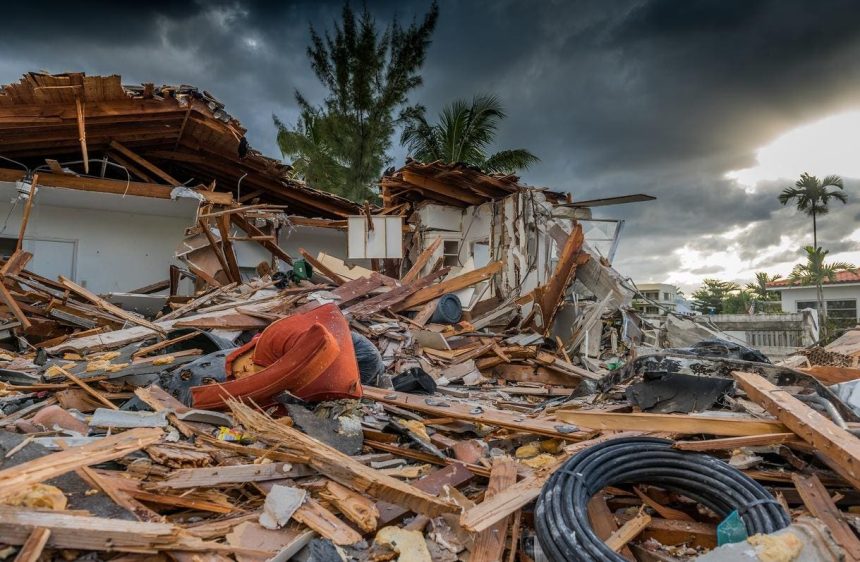The IRS has answered some frequently asked questions (FAQs) relating to rules for distributions from retirement plans, IRAs, and retirement plan loans for individual taxpayers impacted by federally declared major disasters.
Background
SECURE 2.0 Act—which, again, sounds like a sequel to an action movie—is a follow-up to 2019’s retirement-heavy legislation, the SECURE Act. President Biden signed the SECURE 2.0 Act into law on December 29, 2022, as part of the Consolidated Appropriations Act of 2023. SECURE 2.0 Act made several changes to existing law, including:
- Automatic Enrollment. Beginning in 2025, employers who start new retirement plans after December 29, 2022, will be required to automatically enroll eligible employees in their retirement plan—exceptions exist for small companies with ten or fewer employees, new companies, or church and government agencies. However, employees don’t have to participate and may opt out.
- Roth Account Matches. Employers can amend their existing plans to allow employees to receive vested matching contributions to Roth accounts—this is a change from when matching was only on a pre-tax basis.
- RMDs. SECURE 2.0 made several changes to RMDs (required minimum distributions). Some of the changes were confusing—and the IRS has been rolling out guidance. Last year, Notice 2022-53 noted that final RMD regulations will apply no earlier than the 2023 distribution calendar year. Notice 2023-54 added another year of relief by excusing 2023 missed RMDs for non-eligible designated beneficiaries of IRA owners who died in 2020 or 2021 after the required beginning date. And, not to be outdone, Notice 2024-35 added yet another year of relief (you can read more here).
- Qualified Charitable Distributions. Before the SECURE Act and SECURE 2.0, individuals aged 70½ or older could donate $100,000 annually to qualifying charities from their IRA—the contribution can count towards the taxpayer’s required RMD. As of 2023, that amount is indexed for inflation. Additionally, taxpayers who are 70½ or older can now make a one-time election of up to $50,000—indexed for inflation—from their IRA to a split-interest entity like a charitable remainder unitrust.
- Student Loans. SECURE 2.0 allows employers to make matching contributions to retirement plans based on employees’ student loan payments. The match amount is calculated as if the employee contributed their loan amount to the plan even if they did not make any elective contributions.
- 529 Plans. Beginning this year (2024), you can roll any unused 529 plan funds into a Roth IRA without a penalty. You can read more about that here.
Section 331
Another significant change tied to SECURE 2.0 was the treatment of retirement accounts and loans following a qualified disaster. Section 331 of SECURE 2.0 allows qualified individuals—those whose principal residence during the incident period of a qualified disaster is in the qualified disaster area and who have sustained a related economic loss—flexibility when taking those distributions or loans. The FAQs focus on that relief on three fronts:
- Expanded distribution and tax relief. Up to $22,000 of qualified disaster recovery distributions from eligible retirement plans (certain employer-sponsored retirement plans, such as section 401(k) and 403(b) plans and IRAs) can be distributed to qualified individuals per disaster without being subject to the 10% early withdrawal penalty. Income taxes would still be payable on the distribution but can be spread over three years. You can repay those amounts (and escape the related tax) within three years.
- Relief to repay distributions taken for principal residence purchase or construction. Individuals who claimed a first-time homebuyer distribution from an IRA or a hardship withdrawal from a section 401(k) or 403(b) plan if the distribution was to be used to purchase or construct a principal residence in a qualified disaster area can put those funds back into the plan without a penalty if they were not used to buy or build a residence.
- Plan loan relief. The maximum loan amount that a qualified individual may borrow under an eligible retirement plan (not including an IRA) is boosted to $100,000 (or 100% of your vested account balance). An employer may also extend the repayment term by an additional year.
The incident period for a qualified disaster—any disaster for which the President has declared a major disaster after December 27, 2020—is specified by the Federal Emergency Management Agency (FEMA) as the period during which the disaster occurred. That could be a single day (for example, in the case of a tornado) or multiple days (for example, in the case of a hurricane or snowstorm). You can determine the incident period by checking out the FEMA website.
Economic loss may include loss, damage to, or destruction of real or personal property from fire, flooding, looting, vandalism, theft, wind, or other causes, as well as loss related to displacement from your home or loss of your job or business due to temporary or permanent layoffs.
Qualified disaster recovery distributions are those made to a qualified individual from an eligible retirement plan on or after the first day of the incident period of a qualified disaster and before the date that is 180 days after the latest of December 29, 2022, the first day of the incident period with respect to the qualified disaster, or the date of the disaster declaration of the qualified disaster.
Employers do not have to allow for qualified disaster recovery distributions or loans from your retirement plan. However, if an employer does not treat a distribution as a qualified disaster recovery distribution, you may still treat a distribution as such on their federal income tax return if they are a qualified individual and the distribution meets the requirements to be a qualified disaster recovery distribution. Use Form 8915-F, Qualified Disaster Retirement Plan Distributions and Repayments, to report qualified disaster recovery distributions.
(You’re probably getting the sense that even with the FAQs, this can be tricky—and expensive if you goof—so it’s a good idea to consult with your tax professional.)
Reliance
So, this is great, right?
Not so fast. These are FAQs, not Regulations. That means that they are issued to provide guidance but, by the IRS’ own admission, cannot be relied upon—and they may be updated or modified upon further review. Taxpayers can rely on Treasury Regulations and sub-regulatory guidance published in the Internal Revenue Bulletin (IRB)—think Revenue Rulings, Revenue Procedures, Notices, and Announcements, but not FAQs. The latter has not —and will not be—published in the IRB. That means if an FAQ turns out to be wrong (or misleading), the law, not the FAQs, will control.
In other words, FAQs are intended to be a way for the IRS to get information out quickly. But you should be aware that it’s not the same as official guidance.
Nonetheless, the IRS notes that “a taxpayer who reasonably and in good faith relies on these FAQs will not be subject to a penalty that provides a reasonable cause standard for relief, including a negligence penalty or other accuracy-related penalty, to the extent that reliance results in an underpayment of tax.” You can read more about reliance here.
More Information
These FAQs related to the SECURE 2.0 Act, were announced in IR-2024-132 and have been memorialized in Fact Sheet 2024-19.
Read the full article here
















